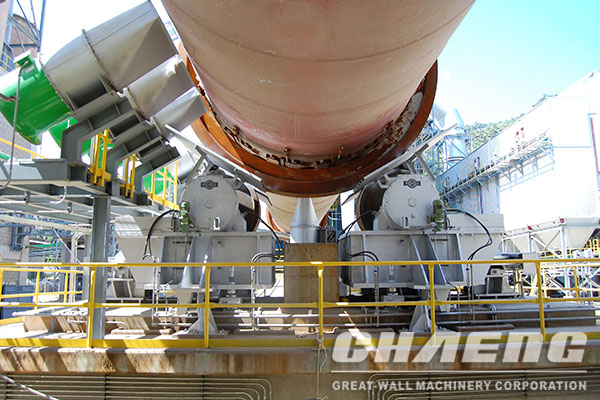27 Jul,2017 UTC+8 Views:
300TPD cement plant CAHENG mini cement plantCHAENG supply 300TPD mini cement plant and auxiliary equipmentis also called small cement plant, which is composed of a furnace shell, a support unit, a support unit thrust, a driving unit, a movable kiln head, kiln tail sealing device, a combustion device, etc. Mini cement plant also has other names, such as cement mini plant and small scale cement plant.

300TPD Cement Plant Introduction:
The processing technology of cement production line is mainly made up of crushing and pre homogenization, raw material preparation, homogenization of raw materials, preheating and decomposition, cement clinker burning and cement grinding. The technological process of cement production line takes limestone and clay as the main raw materials, and through crushing, proportioning and grinding of raw material, and then fed into the cement kiln for calcining clinker material, then add appropriate amount of gypsum (sometimes mixed with hybrid material or additive) to be ground into finished materials.

1. Crushing and pre homogenization
(1) Crushing: during the process of producing the cement, the majority of materials are needed to be crushed, such as the limestone, clay, iron ore, coal, etc. Limestone is the most commonly used raw material, with large particle size and high hardness after crushing. Therefore, the crushing of limestone cement plays an important role in the crushing of mechanically broken materials.
(2)Pre-homogenization of raw materials: pre-homogenization technology is to use scientific material piling technology to realize the preliminary homogenizing of raw materials and to make the materials stockyard have the combined function of storage and homogenizing during the process of storing and feeding of raw materials.
2.Raw material preparation
During the process of the cement production, the cement making machine needs 3 tons of grinding materials at least (including all kinds of raw materials, fuel, clinker, mixture, plaster) to produce 1 tons of silicate. According to the statistics, the dry method to produce cement needs to consume the energy more than 60% that of the whole factory, with the raw materials grinding more than 30%, the coal grinding about 3%, the cement grinding about 40%.
3. Homogenization of raw materials
During the new cement production process, the stability of raw material component is in the premise of firing system. The homogenization system plays an important role in the stability of putting the raw material into the pit at the last line.
4.Preheating and decomposition
The preheating and parts of decomposition of raw materials are completed by the pre-heater to replace part of the rotary kiln function, shorten the length of the kiln and make the gas with accumulation state in the kiln conduct the heat transfer process. Therefore, it can be moved to the inner suspension pre-heater condition, which can mix the gas in the kiln completely, add the touching area, quicken the heat transfer and improve the efficiency of heat exchange to increase the productivity ratio and reduce the energy consumption.
5.Cement clinker burning.
The carbonate in the rotary kiln is further decomposed rapidly and it will cause a series of solid phase reaction, which will generate cement clinker minerals. With the increase of material temperature, the mineral will become liquid and they will be dissolved in the liquid phase and reaction to generate a large amount of clinker. After burning, the temperature of clinker begins to decrease. Finally the cement clinker cooling machine will convey the high temperature clinker discharged by rotary kiln to the withstand temperature of downstream transport, storage and cement mill. At the same time, the sensible heat and recovery of high temperature clinker will improve the heat efficiency and the quality of clinker.
6. Cement grinding.
Cement grinding is the last and the most power-consuming process. Its main function is to grind cement clinker (and gelling agent, performance adjustment material, etc.) to appropriate particle size (represented by fineness, specific surface area) to form certain granular level, increase the water area and accelerate the hydration rate of cement paste, so as to meet the condensation and hardening requirements.